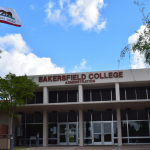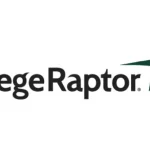In order to provide students with 24/7 virtual support, Boston University recently launched an AI Chatbot — BUzz — across several departments of their campus.
Keesa McKoy, Director of Communications for Enrolled Students at BU, supported the implementation of the technology after its success at the Student Financial Services department for BU’s School of Medicine.
The initial goal of the chatbot was to improve communication with students, particularly around financial matters. BU wanted its medical students to make the best possible decisions regarding their educational investment and reduce student debt.
Keesa recently sat down with Ocelot to share why she believes there is an opportunity to use AI chatbot technology to benefit Boston University students.
In this interview, she shares her experience with this new technology, and explains how it fits into her vision of student engagement and communication at BU.
The Motivation
Ocelot: What was the tipping point that compelled you to expand the chatbot technology across campus? Were there specific metrics or signals? Were you trying to fix something that was broken, or were you looking out on the horizon and seeing the need?
KM: As the Director of Communications for our Enrollment Services Administration (ENSA) unit which supports undergraduate financial aid, our university registrar, etc., I noticed ENSA was a bit decentralized in its communication to enrolled students. Students are often trying to find answers to many different questions across the campus, not just from individual departments. There was a compelling need for a centralized entry point that felt more like a cohesive service rather than a collection of units/departments. We wanted to break down silos and think about the best way to provide a single, unified experience for students. The chatbot offered the opportunity to start us on the path to an integrated approach.
The Roll-Out
Ocelot: What was your plan to effectively launch and roll-out the chatbot? How did you spread the word to your students?
KM: Initially, we pursued a soft launch. We just put it on the website and tested it. We wanted to see how students responded, what they liked about it, and how they would use it. We monitored the volume over time and learned some things that were working well and not so well and then adjusted accordingly. When we were ready for a larger launch, we then took the next step.
Data, Data, Data
Ocelot: You are a big advocate for analytics. Can you tell us about how you are incorporating the chatbot analytics into your overall student engagement approach? What benefits/numbers can you share with us that you have found to be meaningful?
KM: Having an understanding of the number of interactions/level of expected engagement with students over time has been key. We’ve been able to understand trends in activity week over week and even month over month – which helps us be more proactive and supports our enhancements to the knowledge base. Knowing volume and expected spikes helps us plan how to support students appropriately and is also helping provide justification for piloting Live Chat.
Student Use
Ocelot: How many student interactions are happening with the chatbot?
KM: We typically see about 107 chatbot conversations per day on average. Numbers can double to over 200 when we’re approaching a deadline or notification date, like decision announcements. Analyzing inquiries outside of normal business hours is also extremely helpful. 43% of inquiries since November 9th were after hours. On average, we receive 8-11 contact forms a day from students for questions that the chatbot cannot answer. Since launching, we’ve built out over 100 new, custom questions unique to BU (and customized over 300 prepackaged Ocelot Knowledgebase questions) which is something we’re extremely proud of.
Looking Ahead: Personalized Engagement
Ocelot: What does the future hold for BU in terms of expanding your use of AI to help continue to improve student engagement (both in general and with Ocelot’s platform)?
KM: We’re in the process of better understanding student engagement and what our framework for success looks like. Our current approach is activity based on the student lifecycle (financial aid applications, adding/dropping classes, etc.). We are proactively thinking about what more personalized engagement looks like for the future.
Ocelot: When you think about personalized engagement, what is most important to you?
KM: A key part is looking at how we can better integrate with our Student Information System. We’re moving to PeopleSoft Campus Solutions and would love to be able to leverage that in utilization of the chatbot. We’re also focused on helping the AI learn and get smarter. When the chatbot does not understand something, that is an opportunity to help direct our students to resources that can assist them better the next time.















